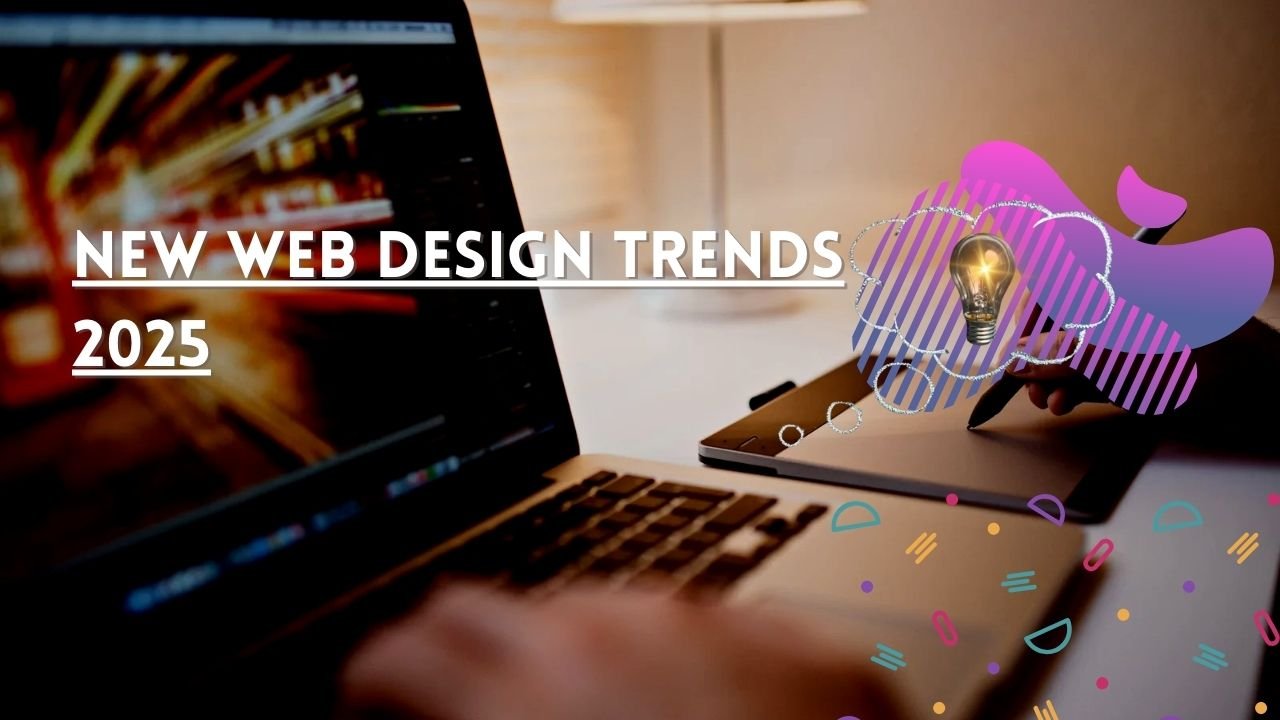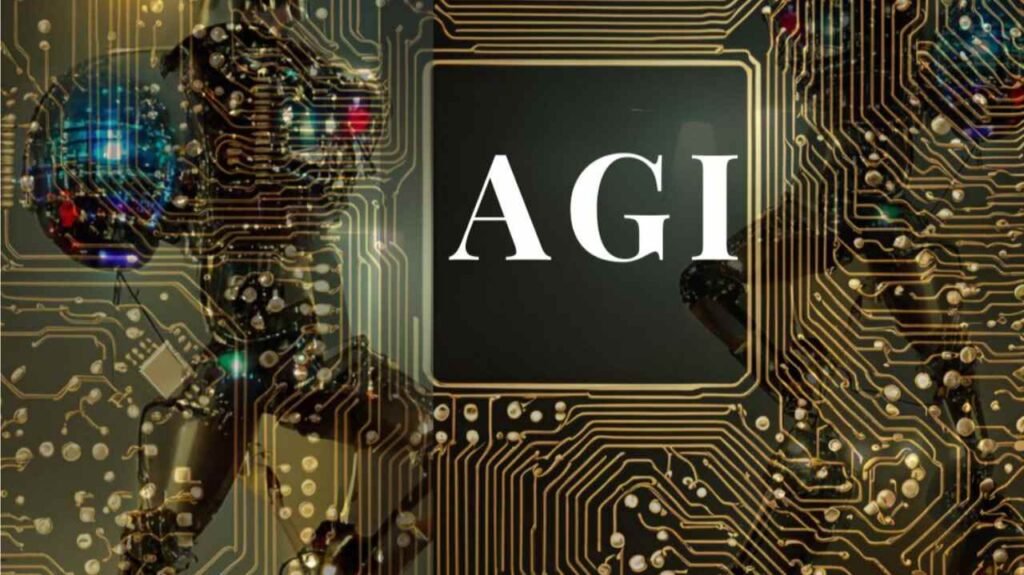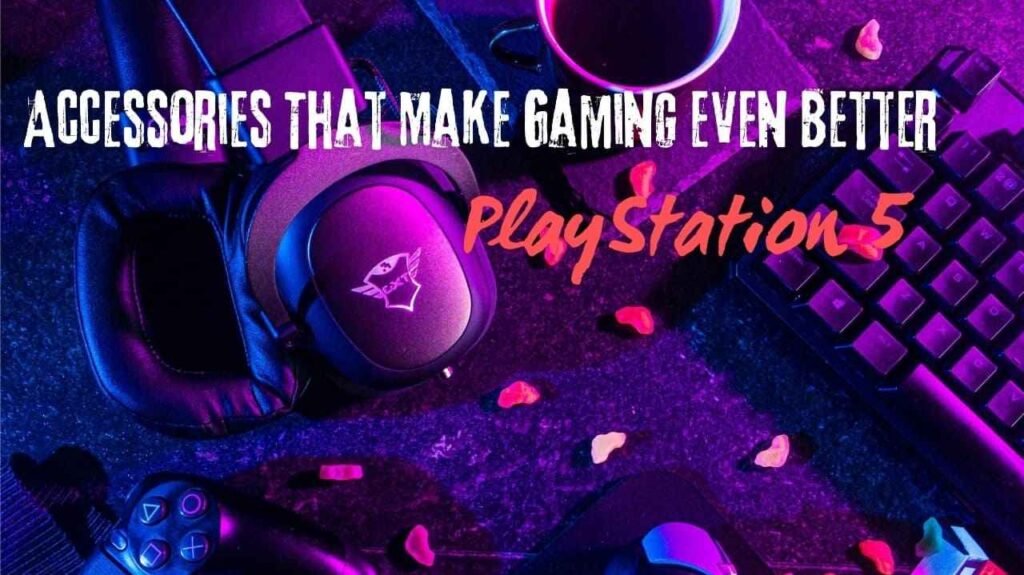As we close into 2025,the online world keeps changing. Now it’s Really become a global village. Businesses aren’t just trying to get people’s attention anymore; they want to build real connections with their audience. In this time of development, a good website can set you apart.
This article will look at the new web design trends 2025 that are about to change how we use the both useful and attractive user interface websites.

1. Minimalism Meets Maximalism
A fantastic web design trend in 2025 is the Combination of minimalism and maximalism. Minimalism focuses on clean lines and simplicity, while maximalism analyzes bold colors and Complex designs. This year, these two styles will merge resulting in a distinctive look that catches the eye.
Minimalism with a Twist Web Design
Minimalism in web design refers to clean, unwrinkled layouts with a front-row seat given to functionality and user experience, “minimalism with a twist” reimagines this simplicity by infusing unique elements that latch onto users.
This is essentially the marriage of minimalist aesthetics, big spaces, crisp typography, and intuitive navigation, with a bold accent in striking animations, color pops, or an unexpected layout.
The result is a design that feels modern yet memorable and balanced between simplicity and personality. “Minimalism with a twist,” coupled with restraint, assures that websites remain user-friendly, commanding attention in a crowded digital space and making an impactful statement without overwhelming the audience.
What Are Minimalism and Maximalism?
Think of minimalism as walking into a gallery with white walls and a single, eye-catching piece of art. That’s minimalism at its best. On the flip side, imagine a vibrant market filled with colors and sounds that’s maximalism.
This year, designers are blending these two styles to create spaces that feel both calm and exciting.
A Personal Story
Once I helped a local client business in creating their website for SEO services. They initially preferred a clean, minimalist design to maintain simplicity. However, after talking about their dynamic and innovative approach to SEO, we opted to add bold elements and vibrant visuals to the layout. The end result was a visually striking website that not only highlighted their services but also matched their energetic brand identity perfectly.
Examples of Successful Blends
Websites like Aesop and Airbnb do this beautifully. Aesop uses a minimalist design for its products, letting them shine, while incorporating bold colors in the background. Airbnb keeps a clean look but uses engaging visuals to tell a story, creating an inviting atmosphere for visitors.
Why This Works
Mixing minimalism and maximalism not only makes a site attractive but also helps users navigate it easily. By guiding attention to important areas, brands can create a smoother experience for visitors.
2. Dynamic Typography
Typography is getting a makeover. In 2025, we’ll see fonts that move, react, and change, creating a lively experience for users.
The Growth of Typography
The era of static text is over. Today’s web design embraces animated fonts that respond to user actions. This makes reading more enjoyable and keeps people engaged.
A Personal Story
At a marketing conference, I saw a startup showcase its AR app for home decorating. Attendees could point their phones at a wall and see how different artworks would look in real time. It was a fantastic demonstration of how AR can boost user engagement.
How to Use Dynamic Typography
- Pick the Right Fonts: Start with fonts that match your brand’s personality. Websites like Google Fonts offer plenty of options.
- Add Animation: Use CSS to animate your fonts. For example, headings could change color as users scroll.
- Test for Readability: Make sure your animated fonts are still easy to read. Use tools like BrowserStack to see how they look on different devices.
- Get Feedback: Share your design with a few people to see their reactions. Are they engaged by the typography, or is it distracting?
Why Animated Fonts Matter
Animated typography can highlight key messages and add a playful touch. A headline that changes as users scroll can keep them interested longer, making the experience more enjoyable.
Best Practices for Dynamic Typography
To effectively use dynamic typography, keep these tips in mind:
- Stay Readable: Ensure animations don’t make text hard to read. Users should easily understand the content.
- Don’t Overdo It: Too much animation can be distracting. Focus on key elements that benefit from movement.
- Test on All Devices: Make sure your typography looks great on desktops and mobile devices.
3. Immersive Experiences with AR and VR
Augmented Reality (AR) and Virtual Reality (VR) are not just used for gaming; they are transforming the way brands engage with consumers online. By 2025, these technologies will play a crucial role in web design.
What Are AR and VR?
AR adds digital information to the real world, while VR immerses users in a completely virtual environment. Both offer unique ways to engage users, allowing brands to create memorable experiences.
A Personal Story
At a tech event, I saw a startup use AR for home decoration. Attendees could see how furniture would look in their homes before buying it.
This not only made shopping easier but also reduced returns. Similarly, Nike uses VR for product launches, letting customers explore new shoes in a virtual space. These instances illustrate how AR and VR can significantly boost user engagement.
Future Potential of AR and VR
As technology advances, the possibilities for AR and VR in web design are endless. These tools can create unforgettable experiences that keep users coming back. As consumers get used to these technologies, their expectations will rise, so brands need to keep up.
How to Integrate AR/VR
- Set Your Goals: Decide what you want to achieve with AR/VR. Is it to increase engagement, boost sales, or improve customer service?
- Choose the Right Platform: Pick a platform that fits your goals. For AR, consider tools like Blippar. For VR, Unity is a great option.
- Create Engaging Content: Develop interactive displays or storytelling experiences that resonate with your audience.
- Test and Improve: Launch a beta version to gather feedback and refine your AR/VR experience.
4. Dark Mode Dominance
Dark mode is more than just a passing trend; it’s becoming a standard feature on many websites and apps. As more users prefer dark mode, brands need to consider this option in their design strategies.
Why Dark Mode Matters
Dark mode offers a sleek look while reducing eye strain, especially for those who spend long hours on screens. It’s popular among users who work late or in low-light settings. Plus, it fits well with modern design trends, making it an attractive choice.
A Personal Story
A friend of mine, a graphic designer, switched to dark mode on her devices and claims it helps her focus during late-night work sessions. Inspired by her, I implemented dark mode on my website, and the feedback was overwhelmingly positive.
How to Implement Dark Mode
Creating dark mode requires thoughtful design. Here’s how to do it:
- Choose Your Colors: Pick colors that look good together in dark mode. High contrast is key for readability.
- Use CSS Media Queries: Use the prefers-color-scheme media query to detect users’ preferences and switch between light and dark modes automatically.
- Allow User Toggles: Consider giving users the option to switch modes. Personalization can enhance satisfaction.
- Test on Devices: Make sure dark mode looks good on all devices, from desktops to smartphones.
User Preferences
Studies show that many users prefer dark mode. Brands that offer this option not only improve user experience but also present a modern, tech-savvy image.
5. Sustainable Design Practices
Sustainability is more than just a buzzword; it’s becoming essential in web design. As consumers grow more environmentally conscious, brands that prioritize sustainable practices will stand out.
Why Sustainability Matters
Sustainable design benefits the planet and resonates with eco-conscious consumers. A commitment to sustainability can boost brand reputation and foster loyalty. Brands that incorporate eco-friendly practices into their web design are likely to attract a dedicated following:
A Personal Story
I once worked on a project for an eco-friendly startup. We focused on creating a website that reflected their commitment to sustainability. From using energy-efficient hosting to optimizing images, every choice was made with the environment in mind. The result was a beautiful site that aligned perfectly with their values.
How to Create Eco-Friendly Websites
To build an eco-friendly website, consider these techniques:
- Choose Energy-Efficient Hosting: Option for providers that use renewable energy sources to reduce your site’s carbon footprint.
- Optimize Images: Reduce file sizes for faster loading times and lower energy.
- consumption. A quicker site benefits both users and the environment.
- Adopt Minimalist Design: A clean design reduces data usage, making it more eco-friendly. Less clutter means less data to load.
Leading Brands
Brands like Patagonia and Everlane have made sustainability a core part of their identity. Their websites reflect this commitment through eco-friendly practices and materials. By showcasing their dedication to sustainability, these brands attract consumers who value environmental responsibility.
6. Fluid Layouts
Responsive design has been a mainstay in web development, but fluid layouts are taking it a step further. In 2025, fluid layouts are becoming increasingly popular that redefined Flexibility.
What Are Fluid Layouts?
While responsive design adjusts to different screen sizes, fluid layouts use percentage-based widths to create a seamless experience across devices. This means that elements on the page resize proportionally, keeping their visual integrity no matter what device is used.
A Personal Story
I once worked on a project for a tech startup that needed a website adaptable to various devices. We chose a fluid layout, and the client was thrilled. Users could easily navigate the site on their phones, tablets, and desktops without any issues. The fluid design improved user experience and reduced bounce rates.
Benefits of Fluid Layouts
Fluid layouts enhance user experience by ensuring content is always displayed optimally. This flexibility keeps users engaged and reduces frustration, as they don’t have to zoom in or out to read content. Moreover, fluid layouts can improve site performance by reducing the need for multiple design versions.
Tools for Fluid Layouts
Frameworks like Bootstrap and Foundation provide tools for creating fluid layouts easily. These resources help streamline the design process while ensuring a consistent user experience across devices. Additionally, using CSS Grid and Flexbox can simplify creating fluid layouts.
7. Bold Color Palettes
Color is crucial in web design, influencing how users feel and behave. In 2025, bold color palettes will take center stage, allowing brands to express themselves more vividly.
The Psychology of Color
Colors evoke emotions and can significantly impact user actions. For example, blue often represents trust, while red can create a sense of urgency. Understanding color psychology helps brands design more effectively and connect with their audience.
A Personal Story
I once redesigned a website for a nonprofit focused on mental health. They initially used muted colors, which didn’t resonate with their mission. After discussing color psychology, we opted for vibrant hues that conveyed hope and positivity. The feedback was fantastic, with users saying the new design inspired them.
How to Choose a Bold Color Palette
To effectively choose and use a bold color palette, follow these steps:
- Start with a Primary Color: Pick a color that represents your brand’s identity. This will be the foundation of your palette.
- Add Complementary Colors: Use contrasting colors to create visual interest and guide users’ attention to key areas. These colors can enhance readability and engagement
- Test for Accessibility: Ensure your color choices are accessible to all users, including those with visual impairments. Tools like contrast checkers can help you determine if your combinations meet accessibility standards.
Brands That Excel
Brands like Spotify and Dropbox use bold colors to create memorable identities. Their websites are visually striking and effectively communicate their messages. By embracing bold color palettes, these brands capture attention and create lasting impressions.
Conclusion
These new web design trends of 2025 focus on transformation and innovation, urging businesses to rethink their online presence and engage with audiences in fresh, exciting ways.
By incorporating elements such as a mix of minimalism and maximalism, dynamic typography, immersive AR/VR experiences, dark mode, sustainable practices, fluid layouts, and bold color palettes, you can craft a website that not only looks stunning but also captivates and retains visitors.
The future of web design is promising and filled with opportunities. Are you prepared to embrace it? By keeping up with these trends, you can make sure your online presence stays relevant, engaging, and impactful for years to come.
FAQ’s
What is the new trend in web design?
A fantastic web design trend in 2025 is the Combination of minimalism and maximalism.
Modern website design is returning to minimalism, embracing the trend of intentional white space.
Example:
Imagine a modern website in 2025, where every detail serves a clear purpose. Envision minimalism as stepping into a gallery with clean white walls and a captivating piece of art at the center. It captures your attention, encouraging focus without any distractions. On the other hand, a cluttered page packed with flashy graphics and clashing colors resembles a crowded marketplace, leaving you feeling overwhelmed and disoriented. Minimalism in web design fosters clarity and sophistication, allowing users to connect meaningfully with what is truly important.
Is web design growing in 2025?
In Past few years, 16 to 24 Percent of agencies have open-to-hire contracts for Web designers.
According to Research The job outlook for web developers and digital designers is anticipated to expand more than 20 Percent and hope to 30 percent.
What are some key practices for sustainable web design?
Sustainable web design practices involve utilizing energy-efficient hosting, optimizing images for quicker loading times, and embracing minimalist designs to minimize data usage. These approaches not only help the environment but also attract eco-conscious consumers.
How can dynamic typography enhance user engagement on a website?
Dynamic typography brings movement and interactivity to text, enhancing the overall reading experience. By using animated fonts, important messages can be emphasized, capturing users’ attention and encouraging them to spend more time on the site.
What makes “Minimalism with a Twist” in web design so unique and effective?
Minimalism with a Twist” blends the elegance of simplicity with unexpected, creative elements that surprise and engage visitors. By stripping away the clutter, it enhances focus and usability, while the “twist” adds bold design accents or interactive features that keep your website fresh, dynamic, and memorable. This approach not only makes your content shine but also elevates user experience, encouraging deeper interaction. It’s minimalism, but with just enough flair to captivate your audience.


